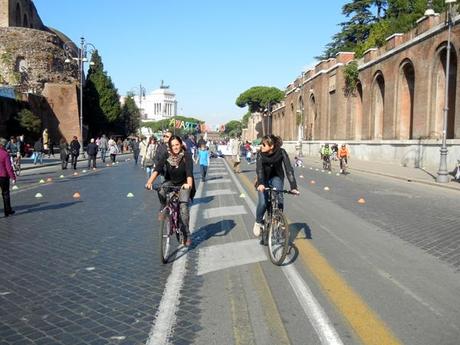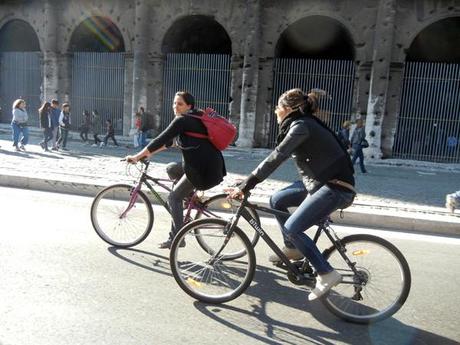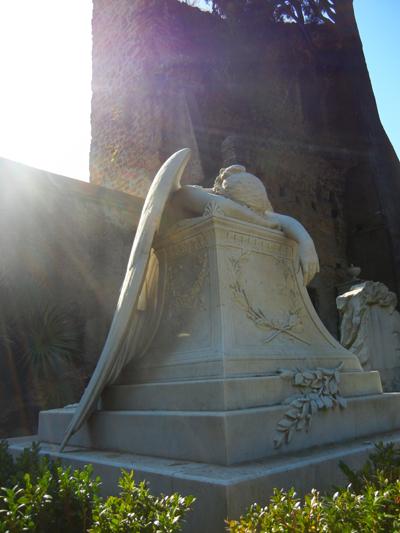
L'Angelo del dolore (Angel of Grief)
Finalmente ricominciamo con i post dedicati a Roma e alla bici…
Let’s start again with the posts dedicated to Rome and to the bicycle …
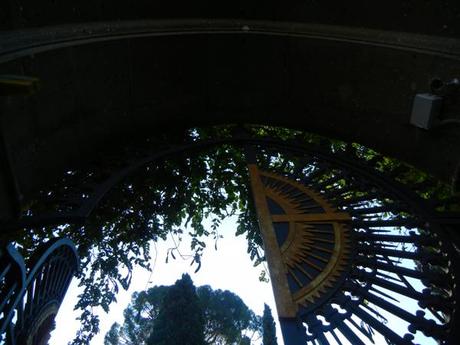
Il cimitero acattolico di Roma
 Domenica mattina ValDi ha visitato il cimitero acattolico di Roma, detto anche cimitero degli Inglesi o cimitero dei protestanti o ancora cimitero degli artisti e dei poeti.
Domenica mattina ValDi ha visitato il cimitero acattolico di Roma, detto anche cimitero degli Inglesi o cimitero dei protestanti o ancora cimitero degli artisti e dei poeti.

Si trova a Testaccio, vicino Porta San Paolo in Via Caio Cestio, 6 (lun-sab 9:00-17:00, ultimo ingresso 16:30; dom e festivi 9:00-13:00, ultimo ingresso 12:30) / www.cemeteryrome.it.
Lungi dall’essere un luogo tetro, è invece una sorta di giardino incantato che sorge all’ombra della Piramide di Caio Cestio, circondato da un bellissimo prato, cipressi centenari e gatti, in ogni angolo…tutto questo lo rende un posto quanto mai suggestivo.
On sunday morning, ValDi visited the Non-Catholic Cemetery for Foreigners in Rome, also known as the graveyard of the English or the Protestant cemetery, or cemetery of artists and poets.
It is located in Testaccio, near Porta San Paolo, Via Caio Cestius, 6 (mon-sat 9:00 am-5:00 pm, last entrance 4:30 pm; sun and public holidays 9:00 am-1:00 pm, last entrance 12:30 pm / www.cemeteryrome.it.
Far from being a bleak place, it is a sort of enchanted garden instead,which sits in the shadow of the Pyramid of Caius Cestius, surrounded by a beautiful lawn, cypress trees and cats in every corner … all this makes it very attractive.
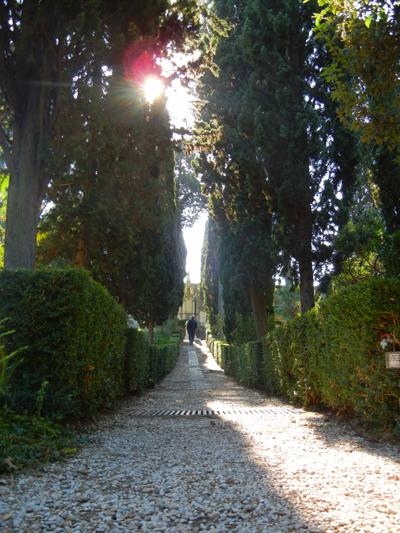
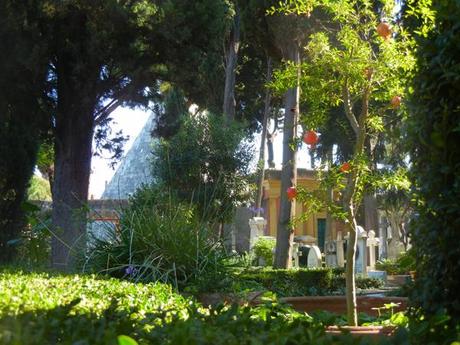
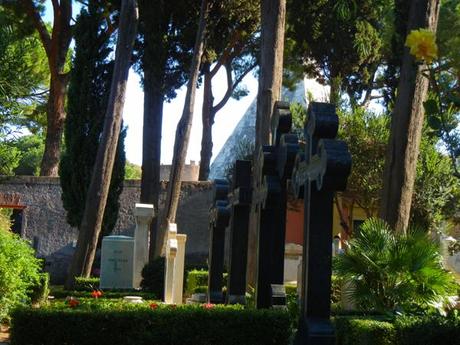

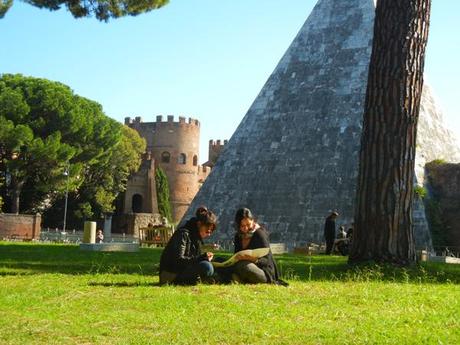 Molti, in passato, lo sceglievano come angolo di relax e meditazione, mossi da un senso di pace facilmente percepibile.
Molti, in passato, lo sceglievano come angolo di relax e meditazione, mossi da un senso di pace facilmente percepibile.





La zona dove sorge il Cimitero, faceva parte dell’Agro romano ed era nota come “i prati del popolo romano”. Ancora fino al 1810 alcun muro o recinzione separava le tombe dalla campagna circostante. Solo qualche anno dopo, nel 1817, i rappresentanti diplomatici di Prussia, Hannover e Russia ottennero dallo Stato pontificio il permesso di recingere la zona.
In the past, many chose it as a corner of relax and meditation, also because of sense of peace easily perceptible.
The area where the cemetery is located, was part of the Roman Empire and was known as “the meadows of the Roman people.”
Even up to 1810 there wasn’t wall or fence which separated the graves from the surrounding countryside. Only a few years later, in 1817, the diplomatic representatives of Prussia, Hanover and Russia obtained from the papal state the permission to enclose the area.
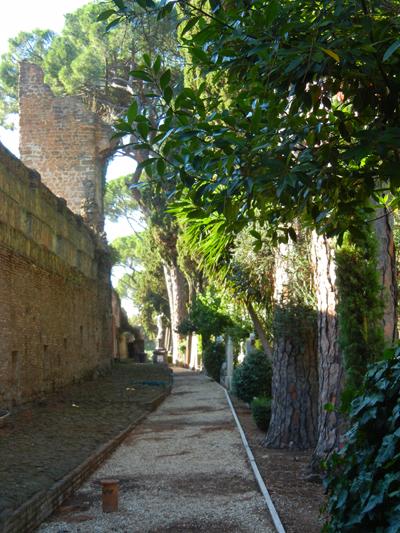
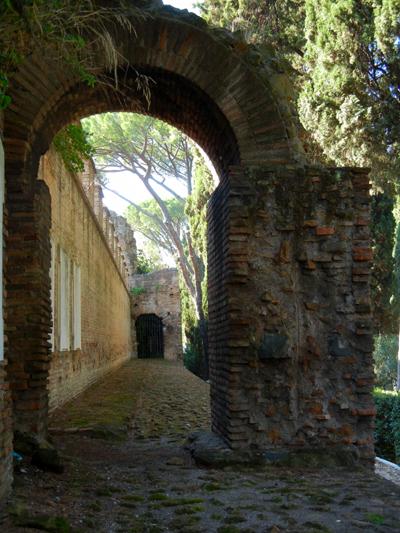
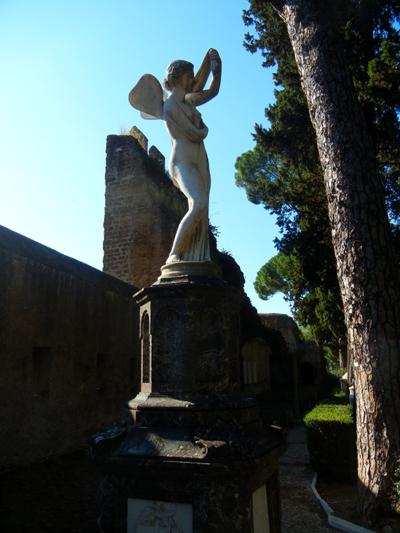 Venne aperto l’11 ottobre 1821 per volere di papa Pio VII Chiaramonti per via del numero ormai sempre crescente di visitatori stranieri a Roma che poi, inevitabilmente, vi trovavano la morte.
Venne aperto l’11 ottobre 1821 per volere di papa Pio VII Chiaramonti per via del numero ormai sempre crescente di visitatori stranieri a Roma che poi, inevitabilmente, vi trovavano la morte.



Era necessario, ai tempi, un posto dove seppellirli dal momento che le norme della Chiesa Cattolica vietavano di seppellire in terra consacrata i non cattolici (i protestanti, gli ebrei e gli ortodossi) e le inumazioni dovevano aver luogo di notte per evitare di suscitare fanatismi religiosi e garantire sicurezza a che prendeva parte alle funzioni.
Erano i tempi del Romanticismo e del Neoclassicismo e Roma, così come tutta l’Europa, era considerata salotto privilegiato per moltissimi artisti.
Si dice che il primo ad esservi sepolto fu George Werpup di Hannover, morto giovanissimo nel 1765 ma, a seguito di altre ricerche, sembra che già nel 1738 uno studente di Oxford di nome Langton, morto anche lui giovanissimo, vi fu sepolto.
It was opened on October 11, 1821 by Pope Pius VII Chiaramonti because of the increasing of foreign visitors in Rome which, inevitably, dead there.
It was necessary, at that time, a place where bury them because the rules of the Catholic Church forbade burial in consecrated ground of non-Catholics (Protestants, Jews and Orthodox) and the burials were to take place at night to avoid arousing religious fanaticisms and provide security to people who take part in the function.
Those were the days of Romanticism and Neoclassicism and Rome, as well as throughout Europe, was considered a privileged location for many artists.
It is said that the first to be buried there was George Werpup of Hanover, who died young in 1765 but, following further research, it seems that already in 1738 an Oxford student named Langton, who died too young, was buried there.
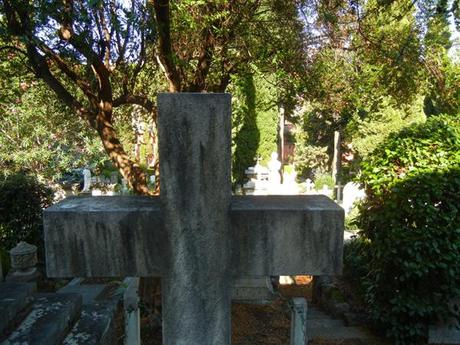
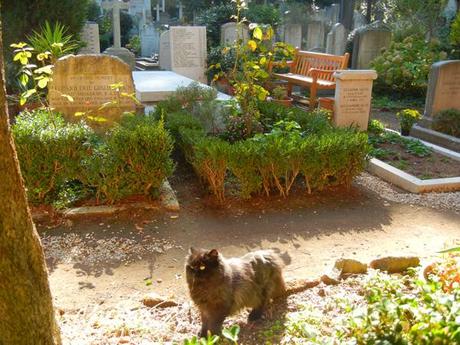 Oggi, al suo interno, conserva circa 4000 tombe, per lo più inglesi e tedesche e molte quelle di personaggi celebri…dai noti poeti inglesi come John Keats (1795-1821) e Percy Bysshe Shelley (1792-1822), fino ad Antonio Gramsci (1891-1937).
Oggi, al suo interno, conserva circa 4000 tombe, per lo più inglesi e tedesche e molte quelle di personaggi celebri…dai noti poeti inglesi come John Keats (1795-1821) e Percy Bysshe Shelley (1792-1822), fino ad Antonio Gramsci (1891-1937).


Il cimitero si divide in diverse aree: tombe nazionali e tombe comuni, parte antica, zona vecchia, zona prima, zona seconda e zona terza.
The cemetery contains about 4000 graves, mostly British and German, and more of them are of famous people … as English poets like John Keats (1795-1821) and Percy Bysshe Shelley (1792-1822), up also to Antonio Gramsci (1891-1937).
The cemetery is divided into several areas: national tombs and commons graves, the old part, the first zone, second zone and third zone.

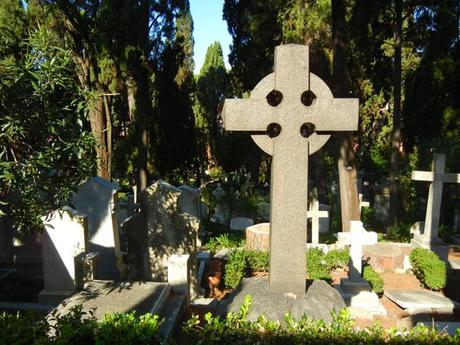
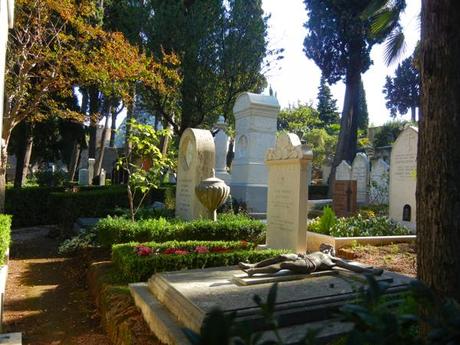

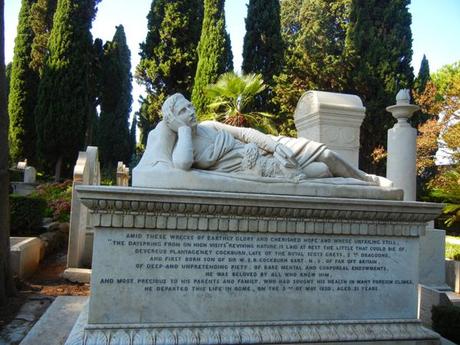
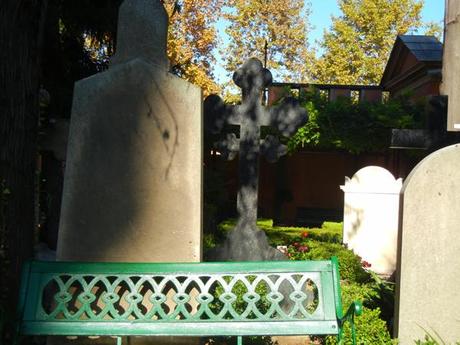
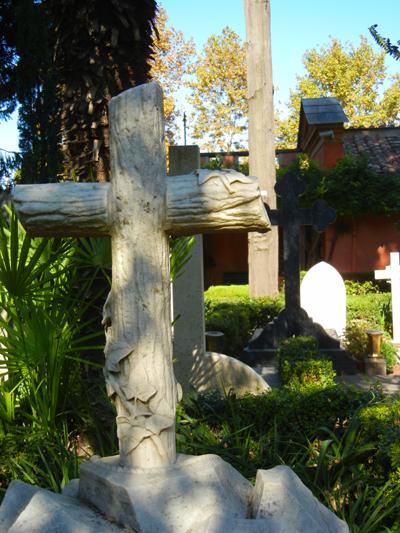
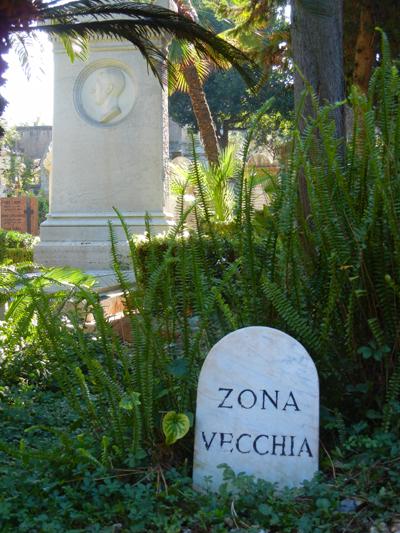
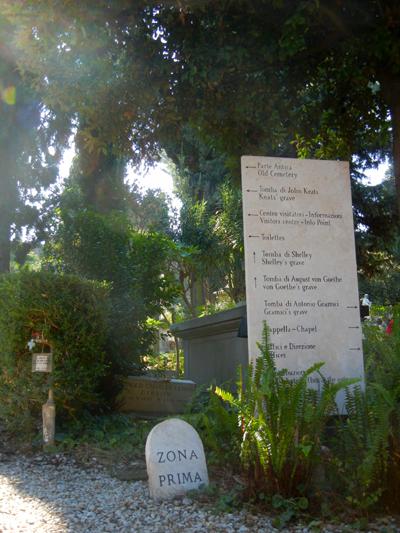 Nella parte antica si trova una delle tombe più celebri del cimitero, quella di John Keats (1795-1821).
Nella parte antica si trova una delle tombe più celebri del cimitero, quella di John Keats (1795-1821).


In the old part, there is one of the most famous tombs in the cemetery, that of John Keats (1795-1821).
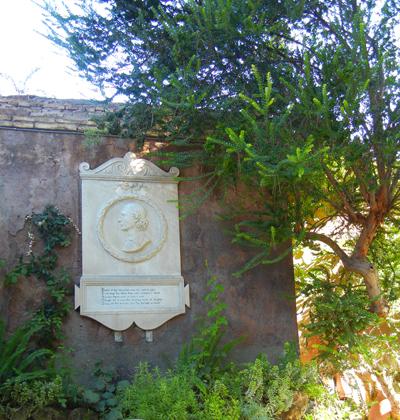
epitaffio dedicato a John Keats
« Qui giace un uomo
il cui nome
fu scritto con l’acqua. »
(epitaffio)
«Here lies one
whose name
was writ in water”. »
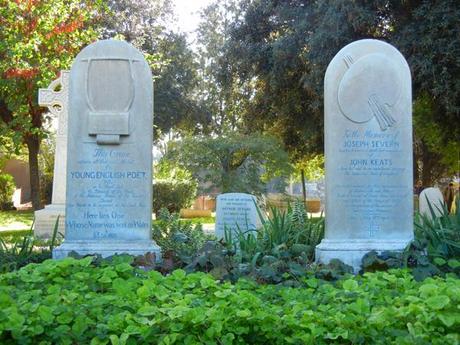
John Keats
Fu uno dei più noti poeti inglesi del Romanticismo. Figlio di uno stalliere dell’East End londinese, interruppe ben presto gli studi scolastici per dedicarsi unicamente alla medicina. Dopo poco abbandonò tutto, questa volta per la poesia, producendo una quantità esorbitante di opere, in un arco di tempo strettissimo, tra la primavera e l’estate del 1818. Tra le più note: Ode to Psyche, Ode on a Grecian Urn e Ode to a Nightingale.
He was one of the most popular English poets of Romanticism. Son of a groom of the East End of London, he soon interrupted his studies to dedicate himself solely to the medicine. Shortly after, he abandoned everything, this time for poetry, producing a lot of works in a narrow time frame, between the spring and summer of 1818. Among the best known: Ode to Psyche, Ode on a Grecian Urn and Ode to a Nightingale.
Nella zona vecchia, troviamo invece Percy Bysshe Shelley (1792-1822).
In the old area, there is Percy Bysshe Shelley (1792-1822).
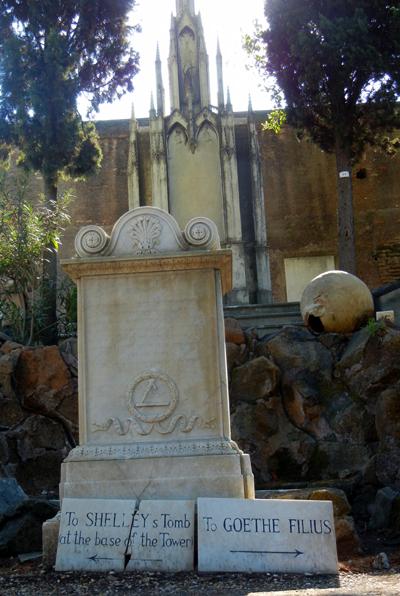

Percy Bysshe Shelley
E ‘stato uno dei maggiori poeti romantici inglesi. Fu un artista molto brillante.
La sua vita non convenzionale e il suo idealismo senza compromessi, lo hanno reso una figura autorevole ma tanto denigrata durante la sua vita e dopo.
Shelley ha composto molte poesie come Ozymandias e Ode al vento di Ponente, ma le sue opere più importanti, tuttavia, furono i poemi narrativi visionari come Prometeo liberato e l’Adonais.
Morì all’età di 29 anni sulla costa della Toscana.
Dopo la sua morte, divenne l’ idolo delle generazioni successive di poeti, tra cui importanti poeti vittoriani e Preraffaelliti.
He was one of the major English Romantic poet. He was a very brilliant artist.
His unconventional life and his uncompromising idealism made him an authoritative but much-denigrated figure during his life and afterward.
Shelley composed a lot of poems as Ozymandias and Ode to the West Wind, but his major works, however, were the visionary poems as Prometheus Unbound and Adonais.
He died at the age of 29 years on the coast of Tuscany.
After his death, he became an idol of the next generations of poets, including important Victorian and Pre-Raphaelite poets.
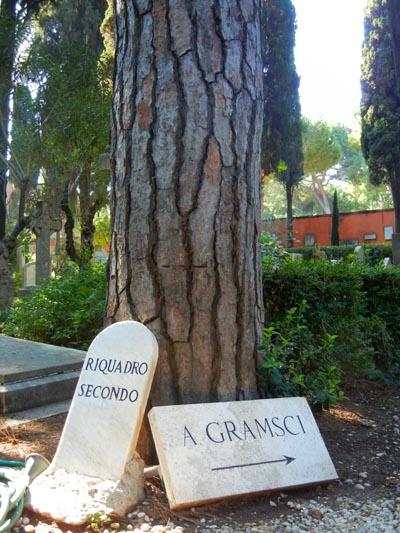 Nella zona terza troviamo invece la tomba di Antonio Gramsci (1891-1937).
Nella zona terza troviamo invece la tomba di Antonio Gramsci (1891-1937).

In the third area we find the tomb of Antonio Gramsci (1891-1937).
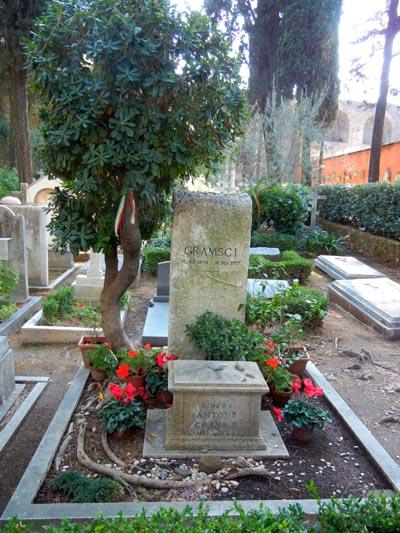
Antonio Gramsci
E’ stato un politico, filosofo, giornalista e critico letterario italiano. Organizzatore e co-fondatore del Partito Comunista Italiano.
Fu arrestato durante il regime fascista di Mussolini, e proprio in quel periodo scrisse i suoi quaderni nei quali raccolse le sue idee sulla società, tra le più note quella sull’Egemonia culturale.
Morì poco dopo il suo rilascio a causa di problemi di salute.
He was a politician man, philosopher, journalistand literary critic Italian. Organizer and co-founder of the Italian Communist Party.
He was imprisoned by Benito Mussolini’s Fascist regime, and at that time, he wrote his notebooks in which he gathered his ideas on society. He is renowned for his concept of cultural hegemony.
He died shortly after his release because of health problems.
Prima di andare via lasciate un’offerta di almeno 3 euro, questo è un cimitero privato che fa affidamento sui contributi dei parenti dei defunti che spesso però non sono sufficienti a mantenerlo così ben curato.
This is a private cemetery which depends entirely on fees paid by relatives of people buried and charitable donations.
So, before leaving, do your offerts.
Lasciato il cimitero, passate per Piazzale Ostiense. Lì, potrete ammirare la famosa Piramide Cestia, monumento funebre, costruito tra il 18 e il 12 a.C. come tomba per Caio Cestio Epulone.
Near the cemetery, there is Piazzale Ostiense. There, you can admire the famous Pyramid of Cestius, built between 18 and 12 BC as a tomb for Caius Cestius Dives.

Piramide Cestia
Alta 36,40 m, si dice che sia stata costruita in meno di 330 giorni, come espressamente disposto da Caio Cestio nel suo testamento, pena la perdita della ricca eredità.
La sua forma si deve probabilmente al fatto che nel 30 a.C. l’Egitto divenne una provincia romana e la sua importante cultura finì per influenzare quella di Roma.
It is high 36.40 m and it is said that it was built in less than 330 days, as expressly was obliged by Caius Cestius in his will. That was the only condition to avoid losing the rich heritage.
Its shape is probably due to the fact that in 30 BC Egypt became a Roman province and its major culture has influenced that of Rome.
Proprio sulla piazza, notate anche Porta San Paolo.
Right on the square, you can also see the Porta San Paolo.
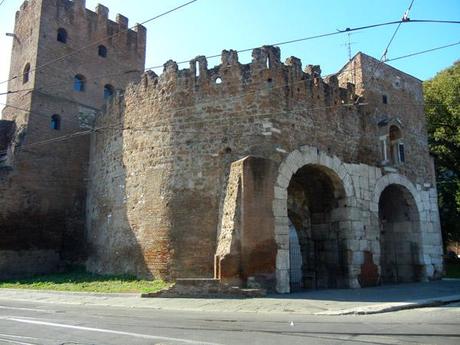
Porta San Paolo
